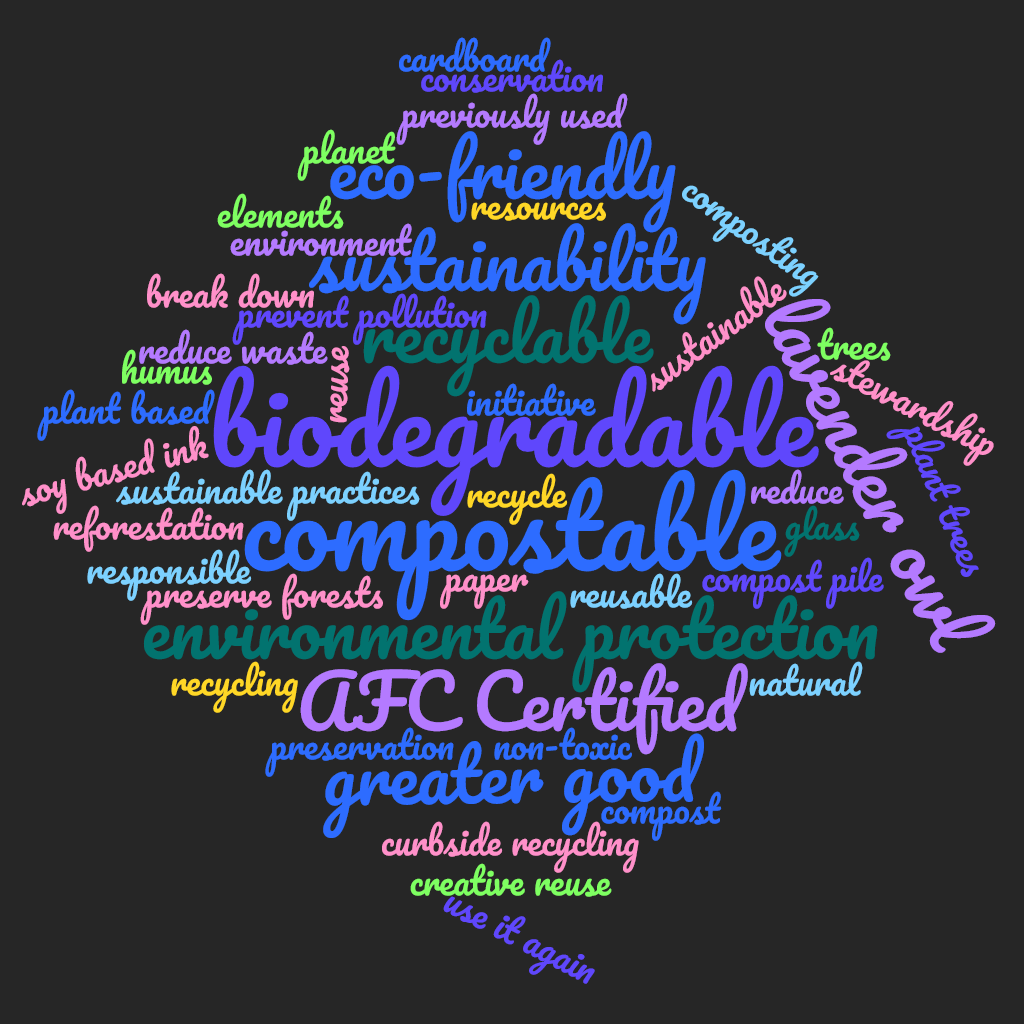Does trying to discern eco-vocabulary leave you feeling dazed and confused?
In case you’re not up on the lingo, let’s break it down shall we?
Dad humor included on the house!

Don’t let the jargon overwhelm you
Let’s break down the differences…
Biodegradable items are capable of being decomposed by bacteria or other living organisms.
To be labeled biodegradable, an item must be able to degrade into organic matter. Generally, items labeled biodegradable break down three to six months after proper disposal. Compared to synthetics which can take several hundred years to decompose, this is far preferable.
However, use of this term doesn’t require certification, so it’s not the highest standard available when going green, but it’s a good start.
Compostable items are biodegradable, but not all biodegradable items are compostable. A compostable item can disintegrate into non-toxic, natural elements at a rate consistent with similar organic materials, leaving no plastic or synthetic material behind.
The process of composting combines microorganisms, humidity, and heat to yield a finished compost product (CO2, water, inorganic compounds, and biomass) called humus,
To be certified as compostable, an item must break down in home compost within 180 days, and 90 days in commercial composting conditions. If you don’t have a home compost, you can look at local options for communal compost sites, or somewhere you can drop off items for commercial composting.
Recyclable items such as paper, cardboard, glass, metal, and wood can be sorted, collected, processed, and converted into new materials and objects.
Recycling remains a key component to sound sustainability practices, as it reduces both waste and demand on the environment for raw materials.
However, there remains a great deal of uncertainty among consumers about which items can and cannot be recycled, so many recyclable items end up in our landfills anyway.
“The ultimate, hidden truth is that the world is something that we make, and could just as easily make differently.”
David Graeber

Compost is highly beneficial to soil and planetary regeneration
So what’s the best choice?
This depends on factors unique to your situation, and ultimately only you can say which one is best for your brand and business, but if you keep our tips in mind, the choice should be easy.
Recycling is the least natural process, and it requires a great deal of energy, so we consider items only labeled “recyclable” our last resort for printing and packaging materials… However items labeled “made from recycled materials” are held in higher esteem, as they have completed the recycling life-cycle, can be recycled repeatedly, and are often highly durable.
Everything is “biodegradable” given a long enough timeline, and the lack of regulation for use of the term biodegradable makes this a gray area where we proceed with caution… It’s a step up from recyclable, but depending on the material it may or may not be the best option.
With the requirement for certification to label items as “compostable”, and composting being the most natural process, leaving behind no trace of synthetic material, and returning nutrients to the soil, we consider this to be the highest standard in sustainable goods.
Lavender Owl aims to bring you as many compostable options as possible, and only supplement the collection we curate for our clients with well-researched biodegradable, recyclable, and made from recycled materials when we are unable to locate compostable items of comparable quality and integrity to best suit your brand.


